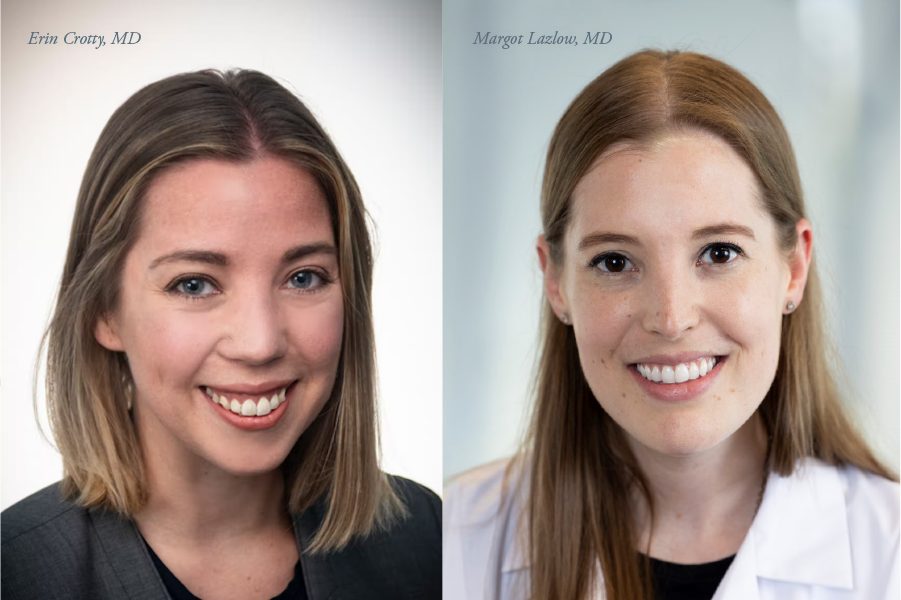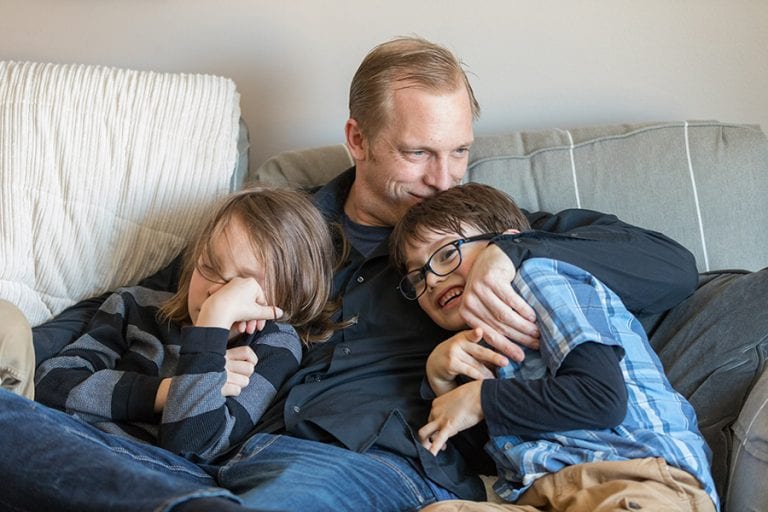Drs. Erin Crotty and Margot Lazow were motivated by their young, resilient patients to spend their careers studying some of the most difficult-to-treat and deadly cancers: brain tumors.
Crotty, a neuro-oncologist working at Seattle Children’s in Washington, wanted to work with the most vulnerable patients with the most to gain from research dedicated to their cause. “These children are truly desperate for better therapies, and these diseases are really devastating. I wanted to help them lead normal lives,” she said.
“The outcomes for many of these patients with current therapy are just not good enough,” said Lazow, a neuro-oncologist at Nationwide Children’s in Columbus, Ohio. “I am inspired by my brave young patients and their families, and I love the ability to form relationships across the age spectrum. Plus, our patients are super cute.”
Kids, adolescents and young adults (AYA) with high-grade brain tumors have some of the poorest prognoses among childhood cancer patients. “Even with all these treatments [chemotherapy, radiation, surgery], we’re still unfortunately not able to provide cures in many cases,” said Lazow. Brain tumors are the leading cause of cancer-related death in children, and sometimes, treatments themselves cause the body’s most delicate organ to suffer.
The severity of late effects means families must constantly make quality of life decisions when considering treatment regimens. They typically do not get to ask, “When will my child return to normal?” They ask, “How can my child have the least amount of harm done to them and survive?”
Thanks in part to CCRF’s 2022 Emerging Scientist Award, awardees Crotty and Lazow are embarking on two novel research projects that will provide new avenues for families who usually hit treatment walls.
Dr. Crotty's Genome Sequencing Platform That Could Predict the Future
Crotty’s genome sequencing platform exposes any hiding brain cancer cells by testing her patient’s spinal fluid DNA.
Brain tumors evade treatments with many tricks that can cause them to wreak havoc later. Some tumors spread tendrils throughout the brain which are invisible to the naked eye, making it difficult for surgeons to completely remove all the tumor cells. Other cancer cells hide from treatments and the immune system using disguises. These elusive cells, called minimal residual cells (MRD), can activate and aggressively multiply just months after initial treatment.
Currently, doctors rely on MRI (Magnetic Resonance Imaging) images and microscopes to look for any remaining cancer cells. “An MRI can only pick up a tumor when it’s the size of a pea, genome sequencing can pick up a tumor DNA that is 100- millionth the size of a pea,” said Crotty. Her pilot studies had a 97% tumor-detection success rate in the lab.
Knowing if the cancer cells are still lurking in her patients may help Crotty predict any future relapses and adjust treatment courses. For example, if the platform detects MRD, some providers may choose to intensify therapy with additional chemotherapy or radiation. In contrast, future studies will ask whether the absence of MRD could allow some young patients to avoid high dose radiation and minimize neurocognitive late effects, improving quality of life. “When disease comes back, it’s much harder to treat,” Crotty said. “If we can prevent disease from coming back in the first place, that’s going to have the biggest effect on treatment outcomes.”
She can test her patients’ spinal fluid any time throughout a patient’s treatment or thereafter to track treatment progress.
So far, MRD genome sequencing platforms have proven to be remarkably successful for childhood leukemia patients to stratify patients into risk groups, and she is hopeful that this platform will be equally prognostic in brain cancer patients.
Crotty is excited that she can offer it immediately to children, and that in the long term, it could help more of her patients survive with fewer late effects. “My hope is that if we offer this testing now, we can bring patients and families some peace of mind while we investigate how best to use the test results to change our clinical practice,” she said.
Dr. Lazow's Phase I/II Trial of a Targeted Type of Radiation
Lazow knew a biologically-targeted, less invasive approach was desperately needed if she wanted her patients to thrive, especially if they had a high-grade, recurrent disease. Today, she is screening her first high-risk patient to enter her trial for a promising, targeted type of intravenous beta-radiation called Lutathera.
“For patients and families that have recurrent or progressive high-grade tumors, we sadly generally don’t have curative options,” Lazow said. “So, if we could find a drug that’s effective and well-tolerated, that would change the treatment paradigm for these patients and allow improved outcomes.”
A few years ago, she and her colleagues learned that many pediatric brain tumors express a receptor (somatostatin) that’s much more prevalent compared to healthy, normal cells. Lutathera, a type of localized radiation which targets that receptor on tumors and spares most healthy cells, was recently studied in another group of cancers and approved by the FDA (Food and Drug Administration).
She recently launched a nationwide Phase I trial for patients ages 4-12 that will help determine safety and dosage of Lutathera in this population. For adolescents and adults older than 12, her team is conducting a Phase II trial which will test Lutathera’s efficacy. For patients to be eligible, their tumors will first be screened for the presence of the receptor (somatostatin) being targeted.
One of her young adult patients with progressive brain and spine tumors is hoping to begin treatment in the coming weeks, and he is the perfect candidate for the trial. Because of an inherited genetic condition that predisposes to cancer development, he is at risk of secondary tumors from standard radiation and chemotherapy. Treatment with Lutathera should target only his tumor cells (which express the receptor) but spare healthy cells in brain, spine and elsewhere in the body to decrease risk of other cancers developing in the future.
Why Funding from CCRF Donors is so Important
As junior investigators, both Crotty and Lazow said their projects simply would not have happened without philanthropic support.
CCRF is helping to provide Lazow and her team with the necessary infrastructure to ensure that her Phase I/II trial runs smoothly. The award funds her support staff and the patient evaluations and screenings needed before entering and while on the trial. For Crotty, CCRF funding is helping her get the preliminary data she needs to get bigger grants to push forward her early detection platform. “[Funding from CCRF] is how I do any of the research I do,” she said. “It allows me to build a bridge between my patients and the research.”
Your donation funds researchers like Crotty and Lazow.
Your support propels bold ideas forward and empowers researchers to discover treatments that are better and safer for kids, and ensure every child can have a long, healthy life after cancer.





